SIR ALFRED MUNNINGS (british 1878–1959) "IRISH PONIES IN A GRASSY LANE" Signed and dated 'A.J. Munnings/1907' bottom right, oil on canvas 26 1/8 x 28 3/4 in. (66.4 x 73cm) provenance: Richard Green Ltd. London, United Kingdom. Private Collection, Pennsylvania. EXHIBITED: "Alfred Munnings from Regional Collections," Brandywine River Museum, Chadds Ford, Pennsylvania, June 6-September 1, 2008. NOTE: Starting in 1907, Munnings went on extended painting expeditions from his home in Mendham to the Norfolk region, making his headquarters in Costessey, near Swainsthorpe. As the artist recalls, "Ringland and Costessey, on the west side of Norwich, are situated in one of the loveliest districts of all the pleasant country surrounding that old city. Although only six to eight miles away, with little perceptible variation, their serenity was unbroken, their peace continuous and unalloyed, the inhabitants living on in the same unaltered ways of life, toiling and resting, their quietude as yet undisturbed by motor-horn or sound of tractor" (quoted in A.J. Munnings, An Artist's Life, 1950, p. 208). The present work was painted in the Ringland Hills. Dated 1907, it is one of the earliest compositions of the Ringland series, which Munnings continued to explore until 1911. The Ringland Hills, with their untouched lands and spectacular views towards the distant wooded parklands, had everything that appealed to Munnings. There, in complete harmony with nature, he confessed "Nobody cared and I was at peace" (op. cit., pp. 217-18). His love for the region was not entirely due to the landscape. Munnings knew that horse dealers, gypsies with their ponies and lurchers were all easily found at the fairs and public houses in the area, hence providing him with formidable subjects. Here, the artist depicts a moment of respite in the hills, where a lad is allowing himself a short break to smoke his pipe, while the horses graze along the path. The scene conveys a sense of stillness, which is most likely due to the languor and fatigue the subjects are feeling. It is also enhanced by the very carefully applied touches of paint on the canvas, which differ from later compositions of 1909-1911, which are more loosely worked. This probably signifies that the present work was most likely considered in advance, and executed in the artist's studio rather than en plein-air . The ponies depicted here are known as Irish ponies. Strong animals known for their endurance, they varied in colour, the main type being the skewbald, as depicted in the foreground, with its white and tan colors. Such horses would have been trained to pull gypsy wagons, a theme which was dear to Munnings, who explored the various regions of England in a cart, along with his beloved gypsy boy, Shrimp. Shrimp, né Fountain George Page was a gypsy horse handler aptly nicknamed for his small stature. He was introduced to Munnings by horse dealer James Drake Though the two men had an often combative relationship, they eventually became friends over their shared love of animals, including ponies. Rapidly, the gypsy would become an indispensable model for the artist, who recalled: "Shrimp was a good lad, a son of the wild. He could neither read nor write, and had no need of either. The best model I ever had" (op. cit., p. 207). Shrimp prominently appeared in a number of Munnings' compositions from 1908 through 1912. If the sitter in this painting is in fact Shrimp, it is one of the earliest portrayals of the gypsy model as Munnings first met him in September of 1907. However, and even if the clothes match the exact description of Shrimp's usual uniform (a tight pair of 'dealer' trousers, a pearl-buttoned Georgian waistcoat, a cloth cap, and a bright red neckerchief), the figure appears older and should probably be taken for George Curzon, Munnings's groom during his years at Swainsthorpe. Munnings employed Curzon during his years at Church Farm. The boy posed for a series of paintings, including hunti
SIR ALFRED MUNNINGS (british 1878–1959) "IRISH PONIES IN A GRASSY LANE" Signed and dated 'A.J. Munnings/1907' bottom right, oil on canvas 26 1/8 x 28 3/4 in. (66.4 x 73cm) provenance: Richard Green Ltd. London, United Kingdom. Private Collection, Pennsylvania. EXHIBITED: "Alfred Munnings from Regional Collections," Brandywine River Museum, Chadds Ford, Pennsylvania, June 6-September 1, 2008. NOTE: Starting in 1907, Munnings went on extended painting expeditions from his home in Mendham to the Norfolk region, making his headquarters in Costessey, near Swainsthorpe. As the artist recalls, "Ringland and Costessey, on the west side of Norwich, are situated in one of the loveliest districts of all the pleasant country surrounding that old city. Although only six to eight miles away, with little perceptible variation, their serenity was unbroken, their peace continuous and unalloyed, the inhabitants living on in the same unaltered ways of life, toiling and resting, their quietude as yet undisturbed by motor-horn or sound of tractor" (quoted in A.J. Munnings, An Artist's Life, 1950, p. 208). The present work was painted in the Ringland Hills. Dated 1907, it is one of the earliest compositions of the Ringland series, which Munnings continued to explore until 1911. The Ringland Hills, with their untouched lands and spectacular views towards the distant wooded parklands, had everything that appealed to Munnings. There, in complete harmony with nature, he confessed "Nobody cared and I was at peace" (op. cit., pp. 217-18). His love for the region was not entirely due to the landscape. Munnings knew that horse dealers, gypsies with their ponies and lurchers were all easily found at the fairs and public houses in the area, hence providing him with formidable subjects. Here, the artist depicts a moment of respite in the hills, where a lad is allowing himself a short break to smoke his pipe, while the horses graze along the path. The scene conveys a sense of stillness, which is most likely due to the languor and fatigue the subjects are feeling. It is also enhanced by the very carefully applied touches of paint on the canvas, which differ from later compositions of 1909-1911, which are more loosely worked. This probably signifies that the present work was most likely considered in advance, and executed in the artist's studio rather than en plein-air . The ponies depicted here are known as Irish ponies. Strong animals known for their endurance, they varied in colour, the main type being the skewbald, as depicted in the foreground, with its white and tan colors. Such horses would have been trained to pull gypsy wagons, a theme which was dear to Munnings, who explored the various regions of England in a cart, along with his beloved gypsy boy, Shrimp. Shrimp, né Fountain George Page was a gypsy horse handler aptly nicknamed for his small stature. He was introduced to Munnings by horse dealer James Drake Though the two men had an often combative relationship, they eventually became friends over their shared love of animals, including ponies. Rapidly, the gypsy would become an indispensable model for the artist, who recalled: "Shrimp was a good lad, a son of the wild. He could neither read nor write, and had no need of either. The best model I ever had" (op. cit., p. 207). Shrimp prominently appeared in a number of Munnings' compositions from 1908 through 1912. If the sitter in this painting is in fact Shrimp, it is one of the earliest portrayals of the gypsy model as Munnings first met him in September of 1907. However, and even if the clothes match the exact description of Shrimp's usual uniform (a tight pair of 'dealer' trousers, a pearl-buttoned Georgian waistcoat, a cloth cap, and a bright red neckerchief), the figure appears older and should probably be taken for George Curzon, Munnings's groom during his years at Swainsthorpe. Munnings employed Curzon during his years at Church Farm. The boy posed for a series of paintings, including hunti
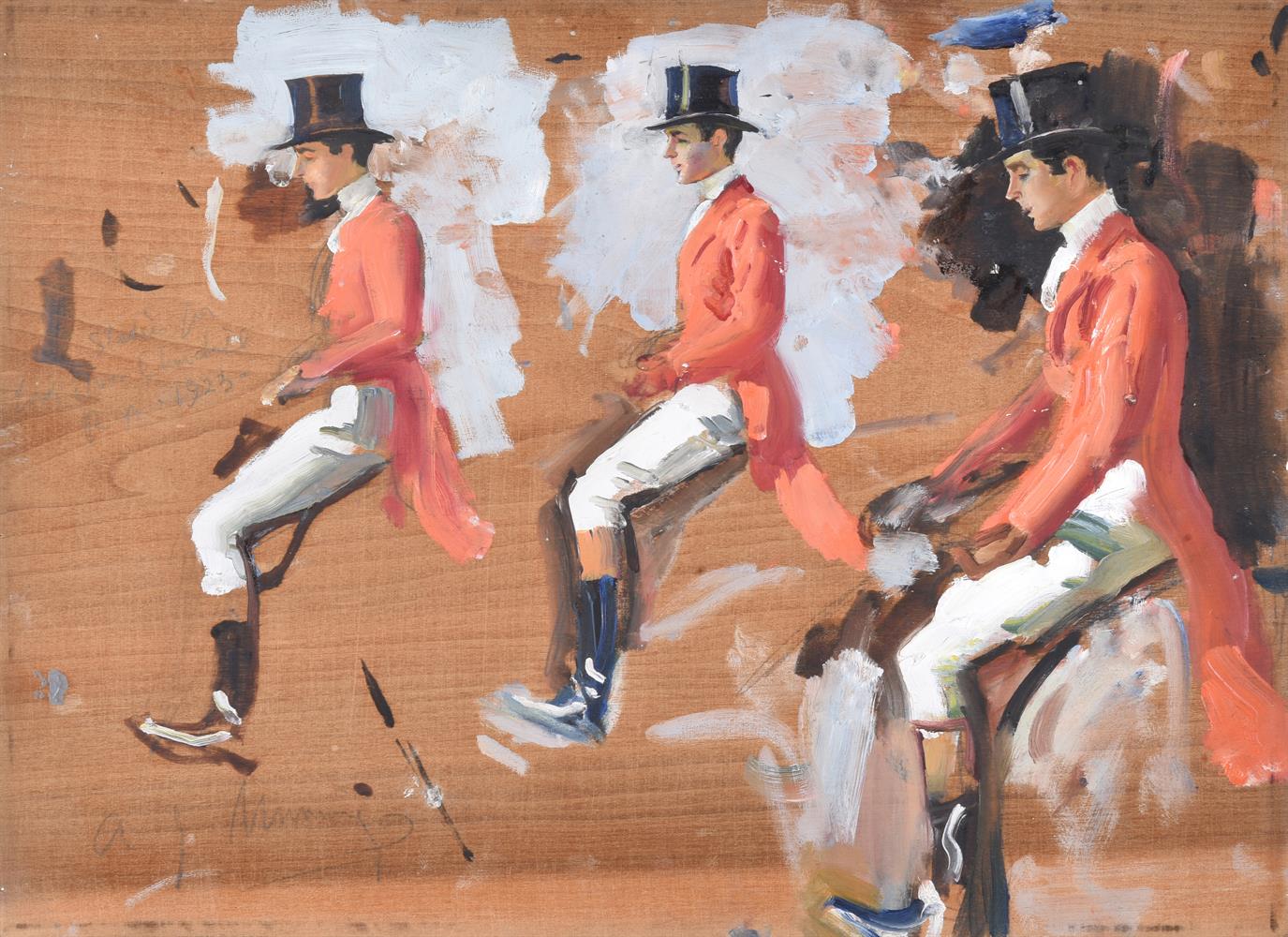
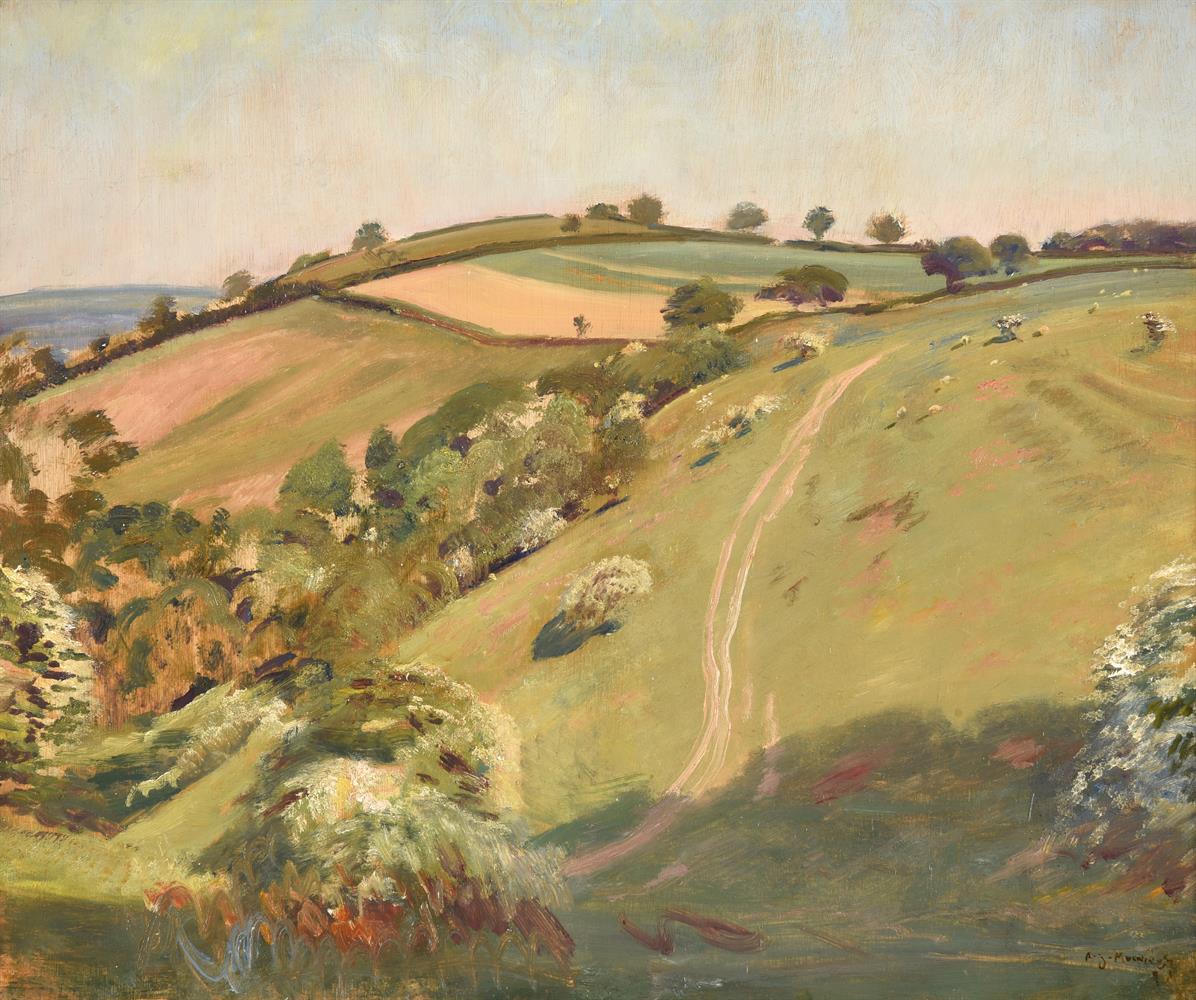







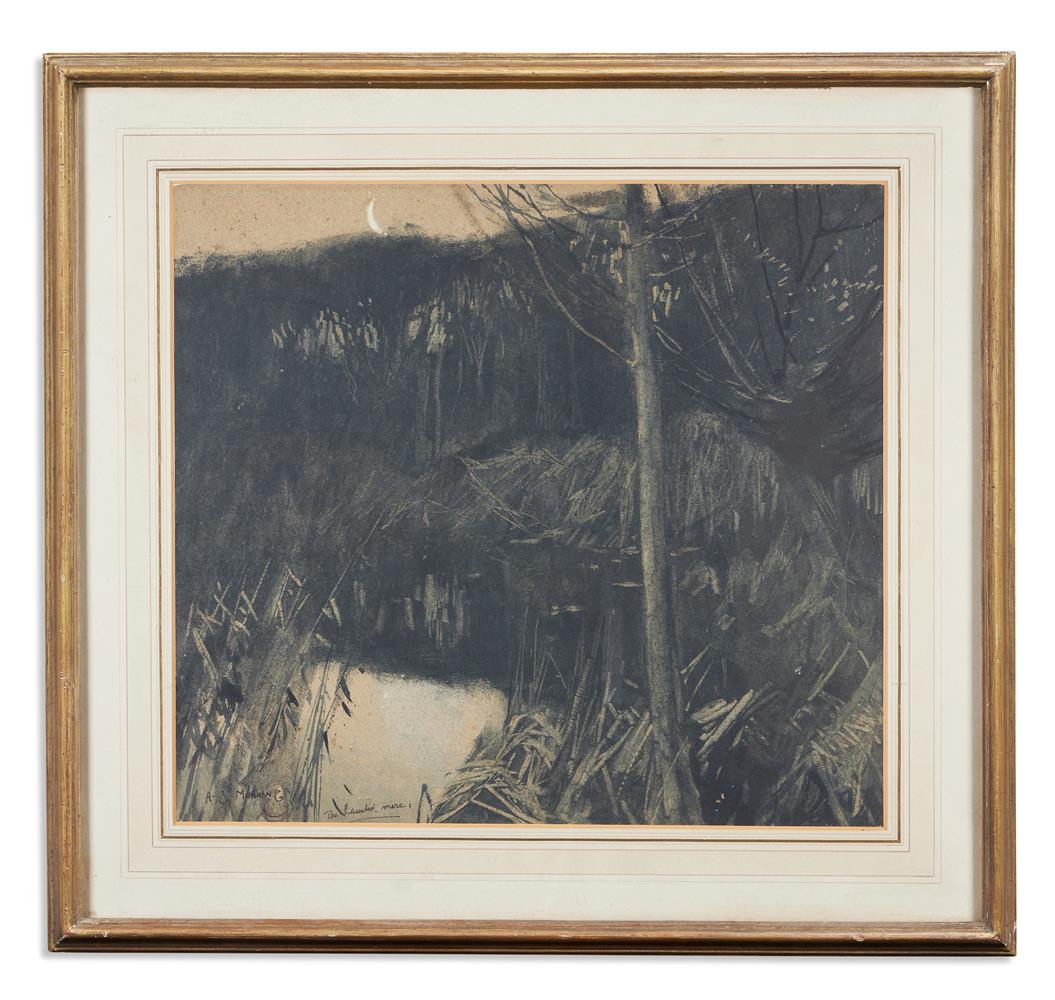

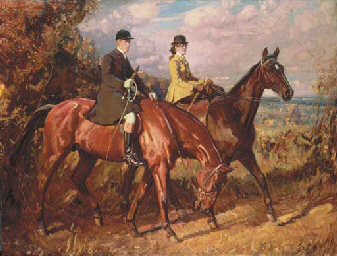

.jpg)
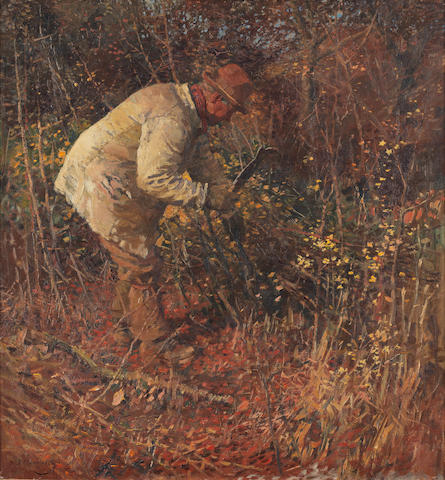
Try LotSearch and its premium features for 7 days - without any costs!
Be notified automatically about new items in upcoming auctions.
Create an alert